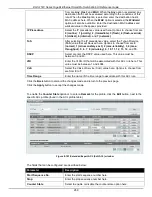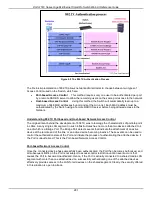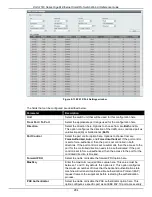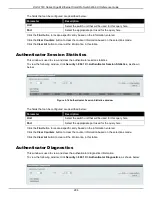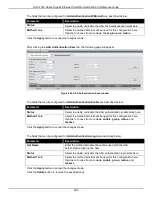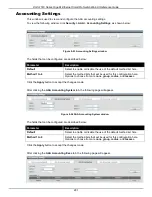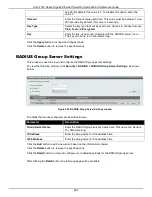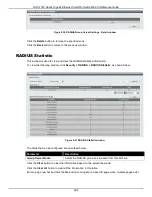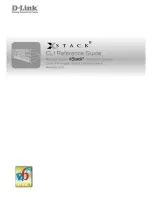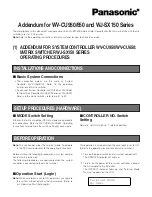
DGS-1510 Series Gigabit Ethernet SmartPro Switch Web UI Reference Guide
280
Three steps must be implemented on the Switch to properly configure the Authenticator.
•
The 802.1X State must be
Enabled
. (
Security > 802.1X > 802.1X Global Settings
)
•
The 802.1X settings must be implemented by port (
Security > 802.1X > 802.1X Port Settings
)
•
A RADIUS server must be configured on the Switch. (
Security > RADIUS > RADIUS Server
Settings
)
Client
The Client is simply the end station that wishes to gain access to the LAN or switch services. All end
stations must be running software that is compliant with the 802.1X protocol. For users running windows
XP and windows Vista, that software is included within the operating system. All other users are required
to attain 802.1X client software from an outside source. The Client will request access to the LAN and or
Switch through EAPOL packets and, in turn will respond to requests from the Switch.
Figure 9-8 The Client
Authentication Process
Utilizing the three roles stated above, the 802.1X protocol provides a stable and secure way of
authorizing and authenticating users attempting to access the network. Only EAPOL traffic is allowed to
pass through the specified port before a successful authentication is made. This port is “locked” until the
point when a Client with the correct username and password (and MAC address if 802.1X is enabled by
MAC address) is granted access and therefore successfully “unlocks” the port. Once unlocked, normal
traffic is allowed to pass through the port. The following figure displays a more detailed explanation of
how the authentication process is completed between the three roles stated above.
Содержание DGS-1510 Series
Страница 1: ...1...




